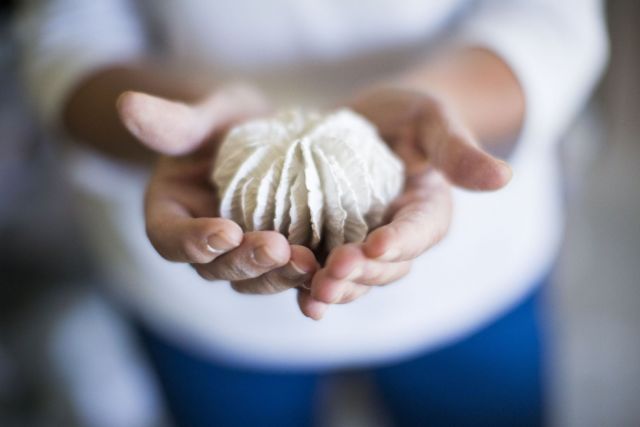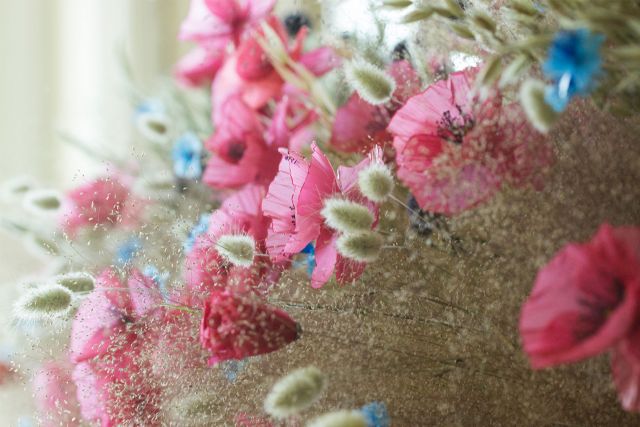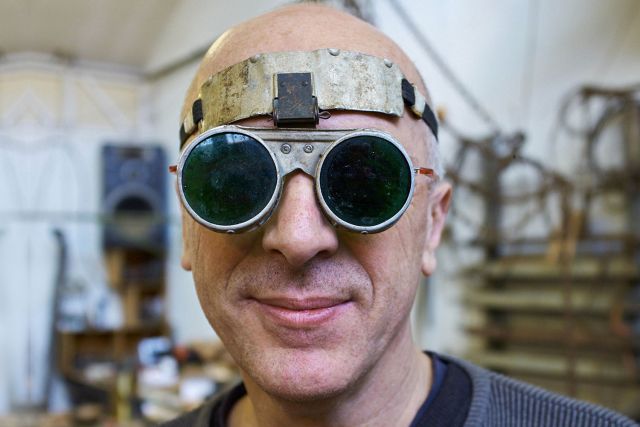This soft, sensual sculpture hangs on the wall like lichen taking possession of stone or wood. Louise used clay from the Black Forest in Germany to model the fine flat leaf-like structures, which she likens to paper. The matt and powdery white aspect of the piece comes from its firing at 1050°C and subsequent dipping into a limestone-based preparation.
Height 42
Diameter 40
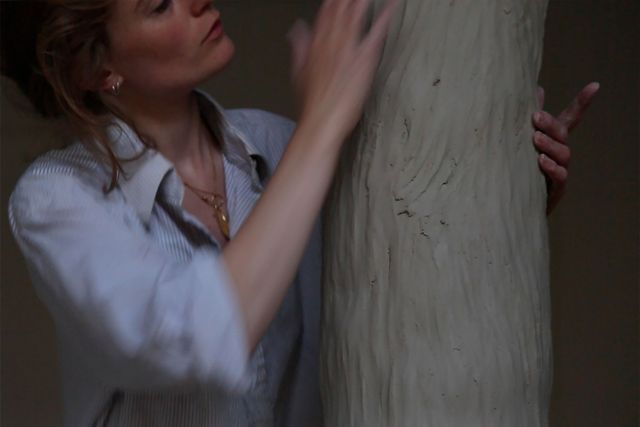
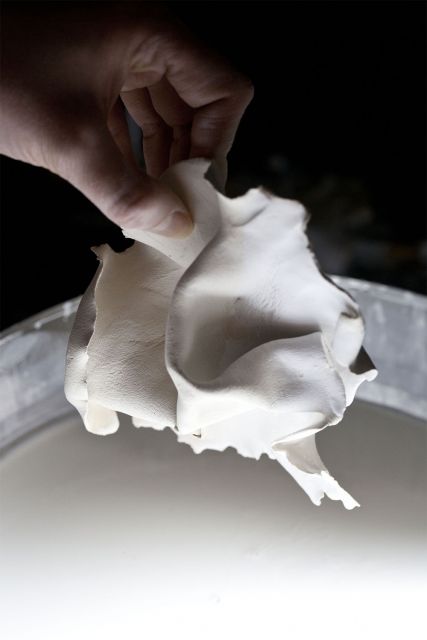
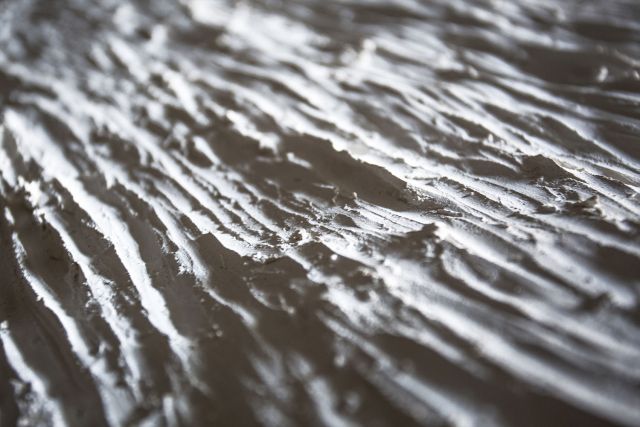

Louise Frydman
- Ceramicist
- Mazille, France
- Rising Star
La Ville, 71250 Mazille, France
By appointment only
+33 688432351
A balance between delicacy and strength
- • Movement is key to her, she creates living shapes and aerial installations
- • Her work with paper led her to the use of clay, which is now her material of choice
- • She voluntarily gives a white, matt and powdery finish to her works, an aesthetic intention based on light and shapes
In 2015, Parisian art gallery Amélie Maison d’Art commissioned Louise Frydman to work on an installation for the Hôtel de Croisilles. She faced a challenge, a colossal 17-metre-long mobile consisting of 1, 300 pieces, her first encounter using the material that is now her hallmark – ceramic. To complete the project, she was mentored by ceramist Jean-François Reboul. Progressively, she moved from Paris to Burgundy and set up her studio where she started to work on ceramic sculptures, panels, and mobiles. Situated near the town of Cluny, a historical site surrounded by nature and Roman architecture, the area provides the perfect backdrop of forests as well as the abundant presence of clay. Frydman’s work is an exploration of these forms derived from nature: a petal, a tree or the wind and the emotions that they exude.
Read the full interviewWorks
Photo: © All rights reserved

Photo: © All rights reserved
The bas-relief assembled from six separate parts spreads across the wall like lichen growing on wood. For this piece Louise was inspired by the theme of the forest. The parts were fired in a kiln at 1050°C.
Height 160 cm
Width 90 cm

Photo: © All rights reserved
The piece reaches to the sky like a growing tree trunk. Crafting such a large piece from fine clay was not easy; Louise had to superimpose the layers in such a way as to create a good balance, exploring the unsteady moment between strength and fragility.
Height 69 cm
Width 50 cm
Length 51

Photo: © All rights reserved
Shapes that recall archetypes of nature are the core of Louise’s work. This piece was inspired by the idea of a form in movement, maintaining a fragile balance on a solid base.
Height 49 cm
Width 38 cm

Photo: © All rights reserved
When creating this sculpture, Louise imagined an efflorescence, growing, opening, living. Beginning at its heart, she pinched and pulled pieces of clay to form the petals, then softened the surface with a paintbrush, moistening delicate areas before firing for eight hours at 1050°C.
Height 19 cm
Width 15 cm

Photo:
This sculpture was created to be installed on a wall, just as a lichen taking possession of stone or wood. Louise used clay from the Black Forest in Germany to model the shape that stretches into fine lacework. Its matt and powdery finish was obtained by a 1050 °C firing and a subsequent dipping into a special limestone based preparation.
Height 42 cm
Width 40
Depth 7

Photo:
Coeur d’Automne aimed to take the poetic and natural forms Louise creates to a more mysterious direction, mirrors being related to literature, tales, and mythology. Louise assembled the ceramic petals on a coated wood frame searching for a harmonious composition.
Diameter 100 cm

Photo:
Louise created these decorative panels by coating wood boards with clay in order to give them both texture and spontaneous movement. This was followed by a long and meditative process of composition, where she placed each ceramic element on the panels and fixed them individually with steel wires.
Height 200 cm
Width 160 cm
Depth 10 cm

Photo:
La Fée des Pétales is a monumental installation made of 1300 handmade ceramic pieces.This mobile was created for the courtyard of the Hôtel de Croisilles, in Paris. This considerable work gave Louise the opportunity to experience the relationship between art and architecture.
Height 17 m
Width 6 m
Depth 4 m

Photo:
With the Bark series, Louise developed a different way to approach clay, scratching argil instead of stretching it. She also wanted to incorporate steel her work as a new material, finding an interesting dialogue between the two materials; one being white, delicate and powdery, the other being dark, strong and colder. Louise is always looking for the balance between delicacy and strength.
Height 65 cm
Width 54 cm





